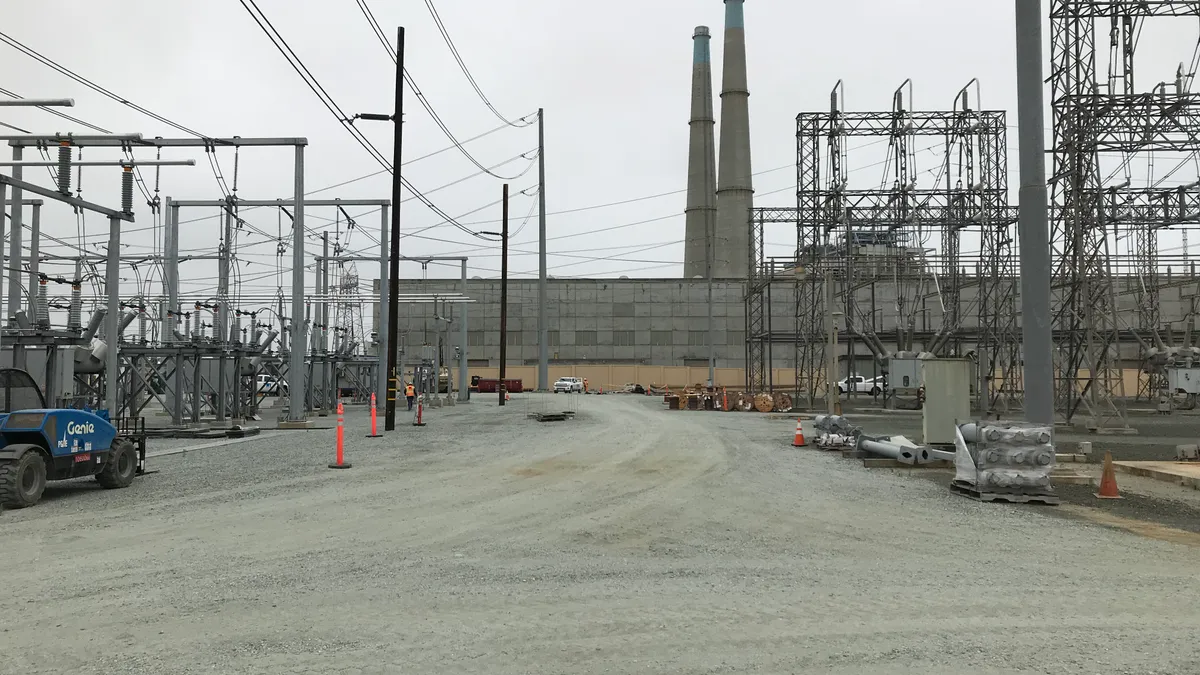Dive Brief:
-
The federal judge overseeing Pacific Gas & Electric's (PG&E) five-year criminal probation is mulling a requirement for the utility to hire its own workforce to trim vegetation around power lines, and tying bonuses for higher-level PG&E employees to the company's compliance with wildfire mitigation work.
-
PG&E's probation, the result of felonies related to a pipeline explosion in San Bruno in 2010, is scheduled to end in 23 months. But in the meantime, "I'm going to do everything I can to protect the people of the state of California from more death and destruction from this convicted felon," District Judge William Alsup said at a hearing Wednesday
- Meanwhile, California Public Utilities Commission (CPUC) President Marybel Batjer on Tuesday issued proposals to guide the agency's review of PG&E's bankruptcy exit plan and oversee its operations in the longer term — including the possibility of revoking PG&E's certificate of public convenience and necessity.
Dive Insight:
PG&E is wrapped up in multiple legal and regulatory proceedings as well as investigations into its role in sparking the 2017 and 2018 Northern California wildfires, which ultimately pushed the company into bankruptcy in early 2019.
Judge Alsup is one of the many parties keeping an eye on the utility's wildfire mitigation work; in January, he issued a filing stating that PG&E is not in full compliance with state vegetation management laws, and asked why he should not include in its probation a requirement to hire and train its own workforce of tree-trimmers. PG&E currently contracts with outside companies to conduct this work. Alsup followed that up with a second order for PG&E to show cause why it should not link "all bonuses and other incentives for supervisors and above," exclusively to meeting targets laid out in PG&E's wildfire mitigation plan and safety goals.
But hiring its own tree-trimmers would be "counterproductive," PG&E attorneys said in a filing last week, because of the shortage of qualified and experienced workers in California. The utility added 4,700 contracted workers to its crews in 2019, but "additional qualified tree workers do not currently exist in California."
PG&E is not in perfect compliance with vegetation management regulations, attorney Kevin Orsini acknowledged at the hearing. "I'm not trying to suggest everything is perfect," he said.
"It's not even close to perfect… it's so far behind," Alsup replied.
Alsup also heard from a retired lineman, currently working as an expert for wildfire victim lawyers, who in December 2018 identified worn-down PG&E infrastructure close to the tower that caused the 2018 Camp Fire. According to Orsini, the hook in question was inspected twice in 2019, but was not flagged for repair. But Alsup voiced concerns about the situation, saying that "the inspections aren't working, they're not catching these problems."
Alsup gave PG&E until Monday to provide him with information on the inspectors who failed to identify the damaged hook and the utility's plans for increasing its number of tree-trimmers before making a decision on his proposals.
Separately, on Tuesday, CPUC's Batjer issued a ruling outlining a framework for the agency's review of PG&E's bankruptcy plan and longer-term operations.
The proposals include having PG&E refresh its boards of directors — half of whom would be from California — constitute a "safety subcommittee" to approve senior management, and an "enhanced oversight and enforcement process," which Batjer described as a roadmap for the CPUC's oversight of PG&E's future performance.
That process includes six steps that are triggered by specific events — for instance, if PG&E's wildfire mitigation plan is not approved, or the utility fails to follow rules and causes a gas or electric incident that destroys more than 1,000 residential and commercial structures. The steps include enhanced reporting, the appointment of an independent third-party monitor, and the appointment of a chief restructuring officer, among others. The last step is a review, and possible revocation, of the utility's certificate of public convenience and necessity.
"We welcome President Batjer's input regarding our plan for emerging from Chapter 11 and building a re-imagined PG&E," utility spokesperson Melissa Subbotin said in an emailed statement.
"We believe our Plan complies with both the letter and spirit of AB 1054, and over the last several months, PG&E has made substantial progress toward emerging from bankruptcy as a financially stable company positioned to continue prioritizing safe operations and customer focus while meeting California's energy needs and clean energy goals in a changed climate," she added.















